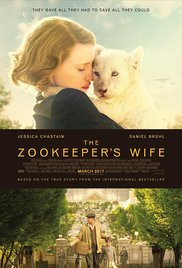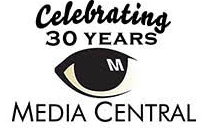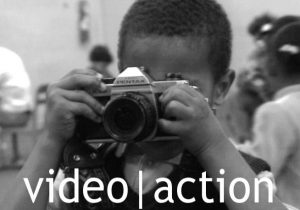by Flo Dwek
![]()
THE  ZOOKEEPER’S WIFE, by Director Niki Caro (NORTH COUNTRY, WHALE RIDER, McFARLAND, USA), is an astonishing cinematic masterpiece, destined for international acclaim and longevity. In bringing Diane Ackerman’s best-selling book (2007) of the same name to the screen, Caro has gifted us with a universal and resplendent tale of love, compassion and survival amid the horrors of war. Blessed with an exceptional cast and riveting dramatic material, she has made a classic WWII film for the ages.
ZOOKEEPER’S WIFE, by Director Niki Caro (NORTH COUNTRY, WHALE RIDER, McFARLAND, USA), is an astonishing cinematic masterpiece, destined for international acclaim and longevity. In bringing Diane Ackerman’s best-selling book (2007) of the same name to the screen, Caro has gifted us with a universal and resplendent tale of love, compassion and survival amid the horrors of war. Blessed with an exceptional cast and riveting dramatic material, she has made a classic WWII film for the ages.
Set primarily in the Warsaw Zoo and its surroundings from 1939-1945, the film tells the true story of Antonina and Jan Zabinsky, a heroic couple who dedicated the war years to hiding and saving Jews in the sanctuary of their zoo, under the very noses of the Nazis. (The Zabinskys saved 300 Jews and, in 1965, were recognized by Yad Vashem, Israel’s official memorial to the victims of the Holocaust, as “Righteous Among the Nations.”)
 Caro unleashes the transformative power of Angela Workman’s brilliantly conceived script, based on Ackerman’s book and Antonina’s intimate war diaries, to shape the heart and soul of the film. Their zeal to capture and depict Ackerman’s original vision of that time and place is so strong, that the film literally springs to life with the gusto of animals in motion.
Caro unleashes the transformative power of Angela Workman’s brilliantly conceived script, based on Ackerman’s book and Antonina’s intimate war diaries, to shape the heart and soul of the film. Their zeal to capture and depict Ackerman’s original vision of that time and place is so strong, that the film literally springs to life with the gusto of animals in motion.
A drive for authenticity permeates the artistic re-creation of the spirit and atmosphere of the Warsaw Zoo and the Jewish Ghetto in wartime and the ruthlessness of the Nazi occupation. (The film was actually shot over a period of 46 days in the Czech Republic and at the Zabinsky Villa in Warsaw.) The well researched historical, cultural and social details on set deepen both our understanding of this period and our feelings for it.
Under Caro’s sensitive direction, indie cinematographer Andrij Parekh’s memorably poignant shots and images explore a woman’s experience of war through the real and allegorical nature of a zoo. We are made to see a lost world filled with startling juxtapositions: a place of sanctuary and captivity, suffused with serenity and chaos, sustenance and deprivation, kindness and cruelty.
 In the center of this maelstrom is an ethereal Jessica Chastain as Antonina, the zookeeper’s role. Her fresh-faced, emotional performance and animal-loving intensity is truly a thing of beauty. From the moment Chastain’s bubbly Antonina appears on screen, she wins us over with her exuberance and sheer enjoyment of the zoo’s wild and wacky animals. A delightful pair of cuddly lynx cubs (in her bedroom, no less) complete the idyllic, pre-war picture.
In the center of this maelstrom is an ethereal Jessica Chastain as Antonina, the zookeeper’s role. Her fresh-faced, emotional performance and animal-loving intensity is truly a thing of beauty. From the moment Chastain’s bubbly Antonina appears on screen, she wins us over with her exuberance and sheer enjoyment of the zoo’s wild and wacky animals. A delightful pair of cuddly lynx cubs (in her bedroom, no less) complete the idyllic, pre-war picture.
Things turn serious for Antonina in her first character-revealing scene, set in the zoo’s wintry elephant enclave. She is kneeling in a party dress on a cold concrete floor, arms covered with birth muck, attempting to rescue a newborn elephant that has stopped breathing—with a highly stressed mother elephant directly behind her. Chastain is superb in radiating Antonina’s tenderness and compassion for the baby elephant as well as her fearlessness of the powerful giant at her back. Through this pivotal scene, Chastain nails Antonina’s persona and foreshadows her unshakeable strength and resolve in coping with the ravages of war yet to come.
The compassionate Antonina means everything to these animals, and they mean everything to her. When those bonds are severed by war, Antonina ends up ‘meaning everything’ to the human beings shelter in the Zabinsky home and zoo. Anchored at the center of this sanctuary and the story itself, Antonina is both nurturing mother and warrior—an innocent, yet resilient life force who is tested by cruelty and danger. Chastain is brilliant at embodying these conflicting roles—something that Caro plays up repeatedly through extreme closeups on her expressive face.
The two male leads are equally marvelous. Antonina’s husband, Jan, played by the Belgian actor Johann Heldenbergh, shines as a raw boned, tormented and kind hearted soul whose hands plow the earth, tend the animals, and stroke his wife’s face with equal measures of grace and intensity. Heldenbergh’s sharp portrayal cuts to the core of Jan’s relentless resistance efforts. He really makes us feel Jan’s simmering angst as he tackles each day’s tension-fraught grind of clandestine document production, concealment and transport—allowing hundreds of Jews to escape the hands of the Nazis.
leads are equally marvelous. Antonina’s husband, Jan, played by the Belgian actor Johann Heldenbergh, shines as a raw boned, tormented and kind hearted soul whose hands plow the earth, tend the animals, and stroke his wife’s face with equal measures of grace and intensity. Heldenbergh’s sharp portrayal cuts to the core of Jan’s relentless resistance efforts. He really makes us feel Jan’s simmering angst as he tackles each day’s tension-fraught grind of clandestine document production, concealment and transport—allowing hundreds of Jews to escape the hands of the Nazis.
 Daniel Brühl plays Lutz Heck, Hitler’s chief zoologist, the zoo-pillaging villain of this story. Brühl plays the contemptible Heck to the hilt, a man we despise for his cruelty and disregard for the lives of people and animals alike. Smitten with Antonina, the much feared Heck imbues nearly every scene with a sense of heightened tension and ferocity. In one particularly vile scene, he returns to the zoo in winter to “check” on the animals. What follows is an atrocity of small proportions that symbolically amplifies the greater atrocities perpetuated in the deadly world beyond the zoo.
Daniel Brühl plays Lutz Heck, Hitler’s chief zoologist, the zoo-pillaging villain of this story. Brühl plays the contemptible Heck to the hilt, a man we despise for his cruelty and disregard for the lives of people and animals alike. Smitten with Antonina, the much feared Heck imbues nearly every scene with a sense of heightened tension and ferocity. In one particularly vile scene, he returns to the zoo in winter to “check” on the animals. What follows is an atrocity of small proportions that symbolically amplifies the greater atrocities perpetuated in the deadly world beyond the zoo.
High praise must also go to the film’s editors—in film and sound alike—who have culled the best of cinematographer Andrij Parekh’s fine work to sweep us away with powerful, haunting images and sounds:
Reverberations of gunshots, bombs and fallen animals. Children holding up their arms to be lifted onto death trains…and the lucky ones who stay hidden, clanging themselves shut in refuse bins. Rough, bestial couplings of bison in a pen and the sweetness of lovers embracing in bed. The cautionary silence of the hidden and the chanting of their Passover prayers. Paintings of tiny handprints and names on shadowed walls, the timeless records of humanity in peril. Swirling bits in the air, like snowflakes, remnants of a burning ghetto.
We watch these profoundly gripping scenes in a darkened room with one another as spectators to a human zoo of frightened, yet hopeful souls. There is so much to see, to savor and to understand; it is staggering to take it all in at once. Wherever we look in this film, tension and caution coexist with menace and mercy. And yet, throughout the chaos and confusion of war, Caro shows us the simple majesty of the animals themselves:
Lynx cubs cuddle in Antonina’s arms. A mother elephant cries out with urgency. Dazed lions and tigers roam freely in the road. A small, worried camel trots past us and brays. An eagle dips and swoops overhead. A tiny bunny comforts a traumatized girl.
THE ZOOKEEPER’S WIFE reminds us why we go to the movies. It deserves all the accolades it will surely garner, for its breathtaking emotional depth and complexity, told through spellbinding images and performances that are sure to stay with us for a very long time.
THE ZOOKEEPER’S WIFE opens March 31 in selected theaters nationwide. The film qualifies for the new IMDB triple-F rating that champions women’s contributions to movies: it has a female director and screenwriter (plus a female producer) and features complex female characters. According to Producer Kim Zubick, this labor of love took over nine years to make, from the time the book was published in 2007.
THE ZOOKEEPER’S WIFE is produced by Focus Features. Rated PG-13. Run time: 2 hours 4 minutes.














